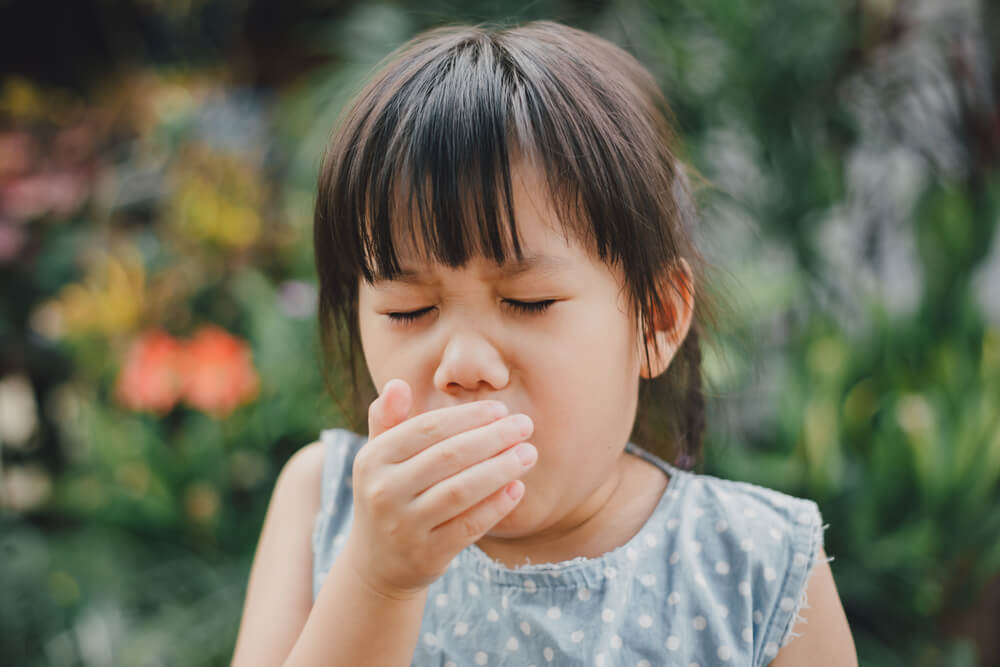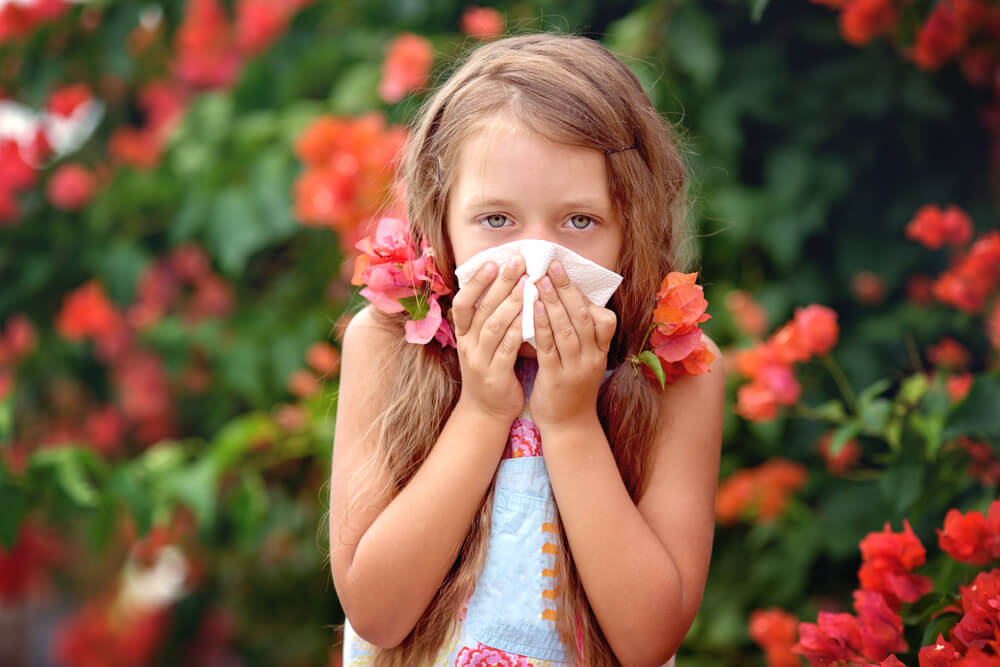Spring is an exciting time for children. After a winter of being cooped up inside, sunny days and warm weather mean running around outdoors with friends. The warm days of early spring conjure images of rolling down grassy hills, bike rides through the neighborhood, and playgrounds after school.
But parents know that spring can bring something a lot less exciting, too: child allergies. And if all your child wants is to be outdoors, you might feel at a loss as to how to prevent spring allergies.
Spring allergies can affect people of all ages, including young children. Luckily, there are several steps that you can take to prevent, prepare for, and treat children’s seasonal allergy symptoms, including having a child allergy test done and using allergy medicine for toddlers and children.
What Are Allergies?
An allergic reaction occurs when the body’s immune system becomes hypersensitive to certain substances. Allergies are common with an estimated 50 million Americans suffering from them each year, according to the CDC. Essentially, the immune system mistakes substances like pollen, peanuts, or dust mites for diseases and launches a disproportionate attack on the substance. That attack is responsible for the symptoms you see in a child’s allergic reaction.
In the case of children seasonal allergy symptoms, these are caused by the immune system’s reaction to pollen. Tree, flower, and grass bloom throughout spring and into summer, releasing the pollen responsible for child allergic reactions. How long do spring allergies last depends on how long the warmer seasons last in your location, but they typically begin in March or April and last until May. Some more sensitive individuals, or those living in warmer climates, might experience symptoms longer or into the summer, and may find that freshly cut grass or high pollen-count days trigger more severe symptoms.

Allergy Symptoms
Allergy symptoms can range from annoying to life-threatening, but luckily children seasonal allergy symptoms, often referred to as hay fever, are rarely severe and appearing most commonly around the eyes and nose. Hay fever, the most common type of spring allergy, is caused by pollen from flowers, trees, or grass, and affects the nose. Common child allergies symptoms include:
- Runny nose and sniffling
- Sneezing
- Itchy nose
- Itchy, red, or watery eyes
For spring allergies, nose and eye symptoms are the most common, but itchiness in the throat, ear canals, or skin is also possible. If there is throat or ear involvement, you should call your pediatrician or make an appointment with an allergist.
You can differentiate these symptoms from the common cold or the flu because they will typically appear at the same time of year and can last twice as long as the average cold. You may wonder how long do spring allergies last? The answer can vary depending on your exact location, but they typically last 6-8 weeks, whereas a cold lasts 1-3 weeks. Other important differences between colds, flu, and allergies are that colds do not have itchy, watery eyes as a symptom, and allergies will not produce a fever as the flu would.
Children’s seasonal allergy symptoms can also include respiratory symptoms. Your child may have a cough with their spring allergy symptoms, which is typically clearing mucus from the throat. However, if they start experiencing shortness of breath or wheezing, call a doctor.
While certain food allergies can begin in infancy, seasonal allergies to pollen typically begin in toddlers and children between the ages of two and five and affect school-age children and young adults the most.
Allergy Test for Kids
If you’re worried your child is suffering from allergies, speak to your pediatrician. We can help you develop a plan on how to prevent spring allergies and manage your child’s allergies. We will also be able to determine whether your child should see a specialist.
Mild seasonal allergies may not need a specialist’s care and can typically be controlled with over-the-counter allergy medicine for toddlers. Very mild child allergic reactions include runny nose and sniffling, but not much else. Symptoms are annoying but don’t interfere with daily life or threaten your child’s health.
There are a couple of types of allergy test for kids:
- Prick test
- Intradermal test
- Patch test
- Blood test
In each of these, the doctor is testing your child’s reaction to specific allergens. The prick test is the most common child allergy test that specialists do and involves placing drops of allergens on your child’s skin — typically their upper back or their arm — and then pricking the skin so the allergen can get in. After 20 minutes any pricks that become raised or red indicate what your child is allergic to. If your child doesn’t react to a prick test, allergens can be injected under the skin. This also takes about 15-20 minutes for a reaction. The patch test involves taping a pad with allergens on it to your child’s skin and cannot be touched or gotten wet for three days, and then you will come back to have it checked. Finally, the blood test is used for children on whom skin testing is difficult or who are at a higher risk of anaphylaxis.
After the test, the specialist can explain exactly what allergens your child reacts to so they can be avoided when possible. Expect for your child to be itchy following their child allergy test, but if they experience trouble breathing, any facial swelling, hives, or nausea and vomiting you should call 9-1-1. These are symptoms of anaphylaxis, which is possible but extremely uncommon after an allergy test for kids.

Treatment and Prevention
There is not really anything that can be done for how to prevent spring allergies from developing, but there are ways to prevent a reaction or ease your child’s spring allergies suffering.
In the case of spring allergies, you can be prepared by checking the pollen count with the weather forecast and scheduling outdoor playdates on lower-pollen days. Vacuum regularly and keep doors and windows closed during high-pollen seasons. You may even consider adding a high-quality HEPA filter to your home system. A dehumidifier in your child’s bedroom may also help.
Your child’s pediatrician or allergy specialist will also work with you to come up with a child allergies management plan. This may consist of prescription or over-the-counter allergy medicine for toddlers and young children.
A variety of allergy medications are available, including prescription and over-the-counter options, and daily maintenance and prevention medications as well as those taken to calm an allergic reaction already taking place. Some allergy medicine for toddlers or young children your doctor may recommend include:
- Antihistamines, which block histamine, a substance the immune system releases during an allergic reaction.
- Decongestants, which help relieve congestion allergy symptoms like a stuffed nose.
- Corticosteroids, which help reduce inflammation often caused by an allergic reaction.
The good news about seasonal allergies is that they’re, well, seasonal. So, how long do spring allergies last? For most, they only last six to eight weeks. If your child is suffering from mild to moderate spring allergies, you may find that a combination of these medications is enough to get you through the season.
For others, allergy season may last longer, which is why it’s important to get an allergy test for kids so you can understand how long do spring allergies last. Tree pollen usually begins in March and April — possibly earlier in a warmer environment like the southern United States, or when winter was uncharacteristically warm. Grass pollen season is typically mid-May to mid-July, and ragweed usually affects allergy sufferers from August until it gets cold out. Not everyone is allergic to all of these, but for those who are, allergy season can last many months.
Another option is available for children suffering from allergies: immunotherapy. Through this process, your child’s doctor administers the allergen as an injection or a tablet regularly, helping your child build a tolerance for the allergens long-term. If your child is at risk of an acute allergic reaction that includes anaphylaxis, their doctor may also prescribe an epinephrine auto-injector (most people are familiar with the brand name EpiPen).
Dealing with allergies is no fun for people of any age, but it can be especially harsh on young children who love playing outdoors and don’t usually let anything stop them. Luckily, there are many treatment options available to help alleviate allergy symptoms to get your kid back on their feet in no time. Does your child suffer from seasonal allergies? Comment below to let us know what’s worked for you! And if you think your child is suffering from allergies, call us today to book an appointment.




